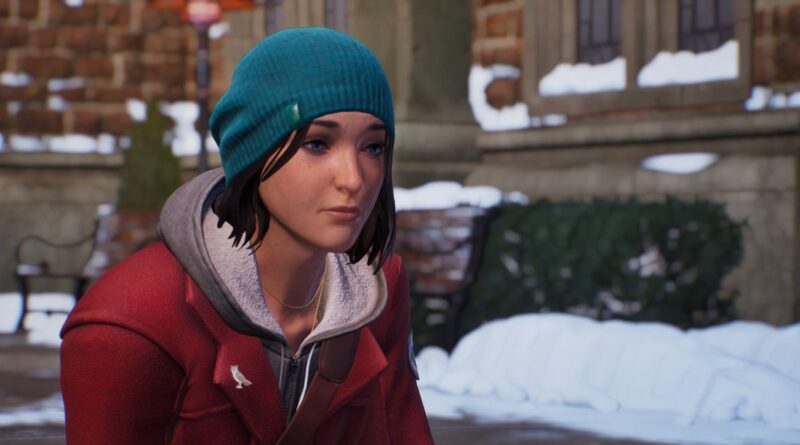Life is Strange: Double Exposure is more heart than whodunit
There’s probably someone in your life like Life is Strange’s Max Caulfield: a talented, sensitive artist who’s charmingly awkward and who seemingly prefers to observe life from afar. Max is easy to root for because she’s someone we already know. But since the events of the first game, she’s understandably more world-weary and reticent, having experienced trauma and grief in the most monumental sense — one that, in fact, erupted in an outsize calamity. It’s also why Life is Strange is so profound. The disaster isn’t just a plot device but an apocalyptic event that represents the heartaches of teenagehood in all its raw, unabashed glory.
And after nine years of exploring other stories (as well as a change of developers), the series finally returns to Max — the protagonist who turned Life is Strange into the phenomenon it is today.
Max is still Max in Double Exposure, and the new game feels largely familiar. So far, I’ve played the initial two chapters of the game (there will be four in total), and the first begins with Max breaking into an abandoned bowling alley with her new friend Safi, a colleague she met when she took up a position as an artist-in-residence at Caledon University. She’s still looking for great pictures to snap and trading friendly barbs with Safi, whose gregariousness mirrors that of Max’s close friend (or high school lover) Chloe Price.
In between examining objects and ruminating on them — a Life is Strange staple by now — Max is also taking pictures of whatever catches her eye. A stain on the wall that creepily resembles a face? Shelves of old bowling shoes that are left behind? The tall, dead-eyed statue of the bowling alley mascot? These are all sights that you can snap photos of as Max, who then uploads them to the in-game social platform, Crosstalk. Max and Safi then scamper out of the bowling alley a few moments later, flushed with adrenaline after a close call with one of the alley’s crumbling displays.
Such smaller, unhurried scenes among Max, Safi, and other characters of the Double Exposure cast make up the good half of the first chapter. If you’re familiar with the cadence of the series, you’ll see that these quieter moments prop up the game’s melodrama, fleshing out the more affecting moments that inevitably arise later. The cast, distinct and quickly likable (except for those you love to hate), points to developer Deck Nine’s forte of writing endearing personalities. Focusing the game on the cast is a decision with huge stakes given the character-driven tale of Double Exposure, but it pays off — at least early on. The professor Lucas Colmenero, for instance, is deliciously obnoxious, which makes humiliating him at every turn particularly delightful.
Then there’s the murder mystery aspect. Of course, things are never tranquil for long in Life is Strange, much less for the hapless Max, who would eventually suffer another loss again — one that she’s unable to reverse with her time manipulation powers from the original. That’s because Max doesn’t have that power anymore. Instead, it has evolved into another twisted form: the ability to rip a cosmic hole between alternate realities. In one, a new friend has been murdered, but in the other, they’re still alive. The events of the two parallel realities are starkly different, and Max will be traversing between them to get to the bottom of this mystery. Then there’s another skill that Max has called “Pulse.” This lets Max catch a glimpse of what’s taking place in the parallel reality, without having to physically travel there. The two skills enable Max to snoop around places or eavesdrop her way to secrets.
The way supernatural abilities serve as an allegory for its cast’s growth has always defined the series, and this is a fascinating development for Max. No longer are we constantly rewinding time and examining the minutiae of conversations like we did in the first Life is Strange. After all, she no longer believes in the invincibility of teenage exuberance to transform the very face of reality (although you can always load a previous save). But at the same time, things can get a tad confusing as you mentally keep track of the affairs between the two universes, while events diverge in two vastly different paths. In the “Living World” — that is, the reality in which your friend is still alive — the holiday spirit may be in full bloom but characters are still embroiled in disputes and inner turmoil that don’t surface in the “Dead World.” Fortunately, Max takes careful notes of everything in her notebook, but I still found myself forgetting some details while blasting between these planes.
That said, Deck Nine’s decision to only introduce Max’s new powers late in the first chapter, rather than getting down to the supernatural business quickly, points to the game’s emphasis on relationships rather than detective work. And the latter isn’t difficult to figure out as long as Max stares at and monologues over every object in the area. But with chapter two concluding in a jaw-dropping cliffhanger, there’s a chance that Double Exposure’s mystery narrative will soon take precedence over the quieter, reflective moments in the upcoming chapters.
Nonetheless, get ready for the inevitable heartache. While Double Exposure may no longer be centered on teenage woes, world-rending despair is a timeless emotion. The pains of being human transcend age, after all.
Life is Strange: Double Exposure launches on October 29th on the Switch, Xbox, PS5, and PC.




